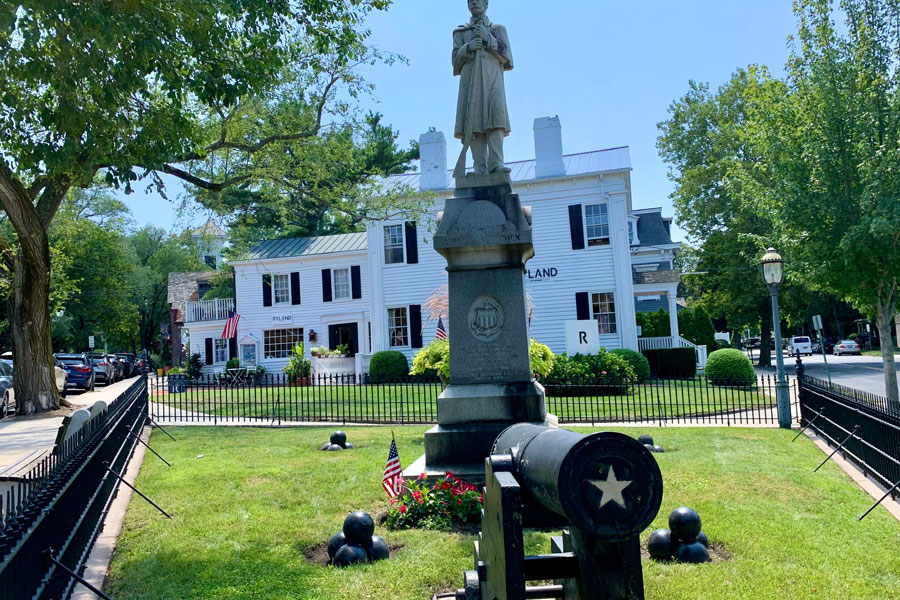Civil War & Early 20th Century

During the Civil War and the early 20th century, Long Island played a crucial role in shaping both American military history and global innovation. From its contributions to the Union Army to the establishment of major military training grounds and the rise of aviation, this period solidified Long Island as a hub of defense, technology, and progress.
Long Island in the Civil War
Although no major battles were fought on Long Island, the region contributed significantly to the Union effort during the Civil War (1861–1865).
- Volunteers: Hundreds of men from Nassau and Suffolk Counties enlisted in New York regiments, many serving in infantry, cavalry, and artillery units.
- Naval Connections: Long Island’s proximity to New York Harbor made it vital for shipping, naval movements, and supply lines.
- Legacy: Monuments and memorials in towns such as Greenport, Huntington, and Sag Harbor honor Long Islanders who fought in the conflict.
Camp Upton – Yaphank’s Military Legacy
- History: Established in 1917 in Yaphank, Suffolk County, Camp Upton was built as a U.S. Army training facility during World War I. Tens of thousands of soldiers trained there before deployment overseas.
- WWII Role: The camp was reopened during World War II to train another generation of soldiers.
- Cultural Note: The famed “Yip Yip Yaphank” musical revue, written and performed by Irving Berlin while serving at Camp Upton, boosted morale and raised funds for the war effort.
- Today: After the wars, the site was converted into Brookhaven National Laboratory, one of the country’s leading scientific research centers, focusing on nuclear physics, energy, and medical breakthroughs.
Aviation History on Long Island
Charles Lindbergh’s 1927 Flight
- Location: Roosevelt Field, Garden City.
- Event: On May 20, 1927, Charles Lindbergh took off in the Spirit of St. Louis on the first solo nonstop flight across the Atlantic Ocean, landing in Paris 33 hours later.
- Significance: This moment cemented Long Island’s place in aviation history and inspired future generations of pilots and engineers.
Grumman & Aerospace Development
- Origins: Founded in 1930 in Baldwin, later headquartered in Bethpage.
- WWII Contributions: Grumman manufactured military aircraft such as the F4F Wildcat and F6F Hellcat, crucial to U.S. success in the Pacific Theater.
- Apollo Program: In the 1960s, Grumman engineers designed and built the Lunar Module used in NASA’s Apollo missions, including the historic Apollo 11 moon landing.
- Legacy: Though Grumman merged into Northrop Grumman, its facilities and contributions remain central to Long Island’s aerospace identity.
Legacy of the Era
The Civil War and early 20th century highlighted Long Island’s dual role as both a community of everyday citizens serving the nation and a center for technological and military advancement. From honoring fallen soldiers to fueling the space race, Long Island’s history during this era reflects resilience, innovation, and leadership.
Quick Snapshot
| Landmark/Event | Significance |
|---|---|
| Civil War Volunteers | Hundreds from Nassau & Suffolk fought for the Union |
| Camp Upton (Yaphank) | WWI & WWII training base; later became Brookhaven National Lab |
| Roosevelt Field (1927) | Site of Charles Lindbergh’s historic transatlantic flight |
| Grumman Aircraft (1930s+) | Built fighter planes in WWII; later built Apollo Lunar Module |
From the sacrifices of Long Islanders during the Civil War to the technological triumphs of aviation and space exploration, this period of history demonstrates the island’s importance to both the region and the nation. The legacy of Camp Upton, Roosevelt Field, and Grumman Aerospace lives on, reminding us of Long Island’s contributions to freedom, innovation, and progress.

